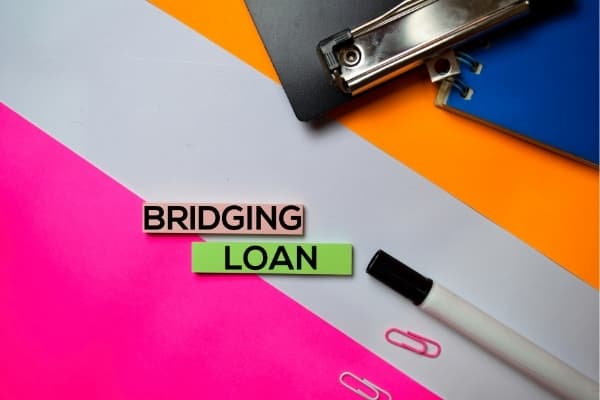Bridging Loans Explained: How Does It Work?
Singapore has been known to have one of the most expensive housing markets in the world. As one person’s family grows bigger or career gets further, a need for a new home and space is inevitable.
However, given the high rate of residential spaces in Singapore, people are apprehensive about buying one.
As a solution, home loans are available in the market. This article provides you with relevant information on bridging loans and other things you need to take note of before getting a bridging loan.
What Is a Bridging Loan?
A bridging loan is a short-term financing used until a person or company secures a permanent financing. A financial institution (FI) offers a bridging loan, which is computed as the value of your new home added to your existing mortgage, then deducting the approximated selling price of your current house. Hence, there is a need for the bank to make a valuation of your current property in bridging loans.
Features and benefits
- Bridging loans enable you to acquire new property while waiting for the sale of your current property without the need to lose your current property. Thus, it will save you from renting a new space while waiting for you to have enough cash to buy a new one.
- Bridging loans usually have a loan tenure of 6 months. It is deemed to be a short term one as compared to other usual loans.
- The application process differs from every lender. Thus, it is best to check the process, fees, and other requirements before deciding whether you will apply for a bridging loan.
Pros and Cons
Pros:
- purchasing a new property without waiting to get a new loan
- providing you ample time to get a better prince on your property
- paying only interest which is capitalised on your peak debt before selling your old house
- having standard interest rates imposed by banks
- reducing your interest bill by making unlimited P&I repayments
- avoiding having to pay the costs of renting and moving twice
Cons:
- paying a compounded interest monthly.
- paying two valuations (valuation of both your existing house and the new purchase)
- paying a higher interest rate if you fail to sell the property in time
- losing your all paid repayments because you cannot redraw name for any reason
How Bridging Loan Works
To illustrate how bridging loan works, here is an example:
Astrid owns an apartment in the city. She wants to sell this apartment to acquire a new property. Her apartment has an existing mortgage balance of $200,000. Before buying the new property, she applied for a bridging loan, during which her existing $200,000 loan became the bridging loan with a maximum loan term of 12 months.
For the new house, she obtains a home loan for $500,000. With this new loan, she now has a combined debt of $700,000. ($200,000 existing debt plus $500,000 new home loan as peak debt).
For example you intend to buy a condo valued at S$1,000,000 and you have an existing property that is valued at S$300,000.
Let’s say the contract provides that you have to make a down payment of 25% of the purchase price. 5% must be in cash and the remaining may be in cash or CPF Funds.
You made a 5% down payment in cash and you need to pay another S$200,000 or 20% of the purchase price to complete the down payment. However, you do not have enough cash and your money is still tied up in your existing home.
This is where bridging loans come in. If assuming that bank offers a loan-to-value (LTV) ratio of 75% of the new property’s purchase price, then you can borrow a maximum of S$750,000. This amount is more than enough to help you complete the down payment while waiting for the sale of your current property.
| Down payment (5% cash) | S$50,000 |
| Down payment (20% cash and/or CPF Funds) | S$200,000 |
| Loan Amount | S$750,000 |
Where to Apply for a Bridging Loan
In Singapore, bridging loans are offered by banks and moneylenders.
| Banks | Moneylenders | |
| Loan amount | Up to 25% of your new home’s purchase | Up to 6 times your monthly salary |
| Interest rate | 5-6% p.a. | 1-4% per month |
| Repayment period | 6 months | From 1 month or until your property completion date |
| Riskiness | In most cases, banks; bridging loans use your property as collateral | Unsecured loan; no collateral required |
How to Apply?
1. Moneylenders
Eligibility:
The common eligibility requirements for bridging loans are:
- borrower must be at least 21 years old
- a minimum salary of S$2,000 salary; and
- must exercise the Option to Purchase (OTP)
Before submitting your application, you should check the bank’s website or lender you wish to apply to.
Requirements:
- identity card/ NRIC
- proof of residence (utility bill, a letter addressed to you and/or tenancy agreement)
- proof of employment (certificate of employment if your job is less than 3 months)
- Recent 3 months payslip
- SingPass
- Copy of the OTP
2. Banks
Bridging loans are being offered, but are not limited to DBS, Standard Chartered, UOB, and Maybank. You can apply for a bridging loan by providing your Option to Purchase document.
Most information is available online. We advise that you visit the website of different banks and lenders before your bridging loan application. Approval of bridging loans will likewise depend on the different requirements of each bank and lender.
Types of Bridging Loans
1. Capitalised Interest Bridging Loan
In this type of loan, the entire amount of the new house you’re planning to buy is covered. Repayments only start after you sell your old house.
In this arrangement, you don’t need to pay for two loans at the same time. Before selling your old property, you are only required to pay the interest in the loan. After your old house is sold, you continue making the normal house loan repayments plus the compounded bridge loan interest, on the new loan.
2. Simultaneous Repayment Bridging Loan
This type of loan is the total opposite of the first type. As such, you need to make a simultaneous repayment of your home loan and the bridging loan. This type appears to be burdensome.
What Else Do You Need to Consider?
Before applying for bridging loans, there are some factors you need to consider.
First, the selling price of your existing house. You should avoid overestimating the likely selling price of your existing house. This way, you can prevent the amount from falling short of the amount required to pay out the bridging loan.
Second, the possibility of your house being sold. Another major you may encounter is your current property not being sold. Thus, you should examine the market whether selling your current property may be sold within the ideal period.
Closing
A high purchase price of home properties in Singapore should not deny you from having your dream home. There are home loans available in the market. As can be gleaned from this article, bridging loans are a good option in purchasing a new property in Singapore.
If you’re in short of funds to acquire new property and want to lessen your cost, then you may want to consider a bridging loan or personal loan.
Moneylender Review is a financial product comparison website that uses an advanced algorithm to provide you with up to 3 free personal loan quotes from Singapore’s top licensed moneylenders.




